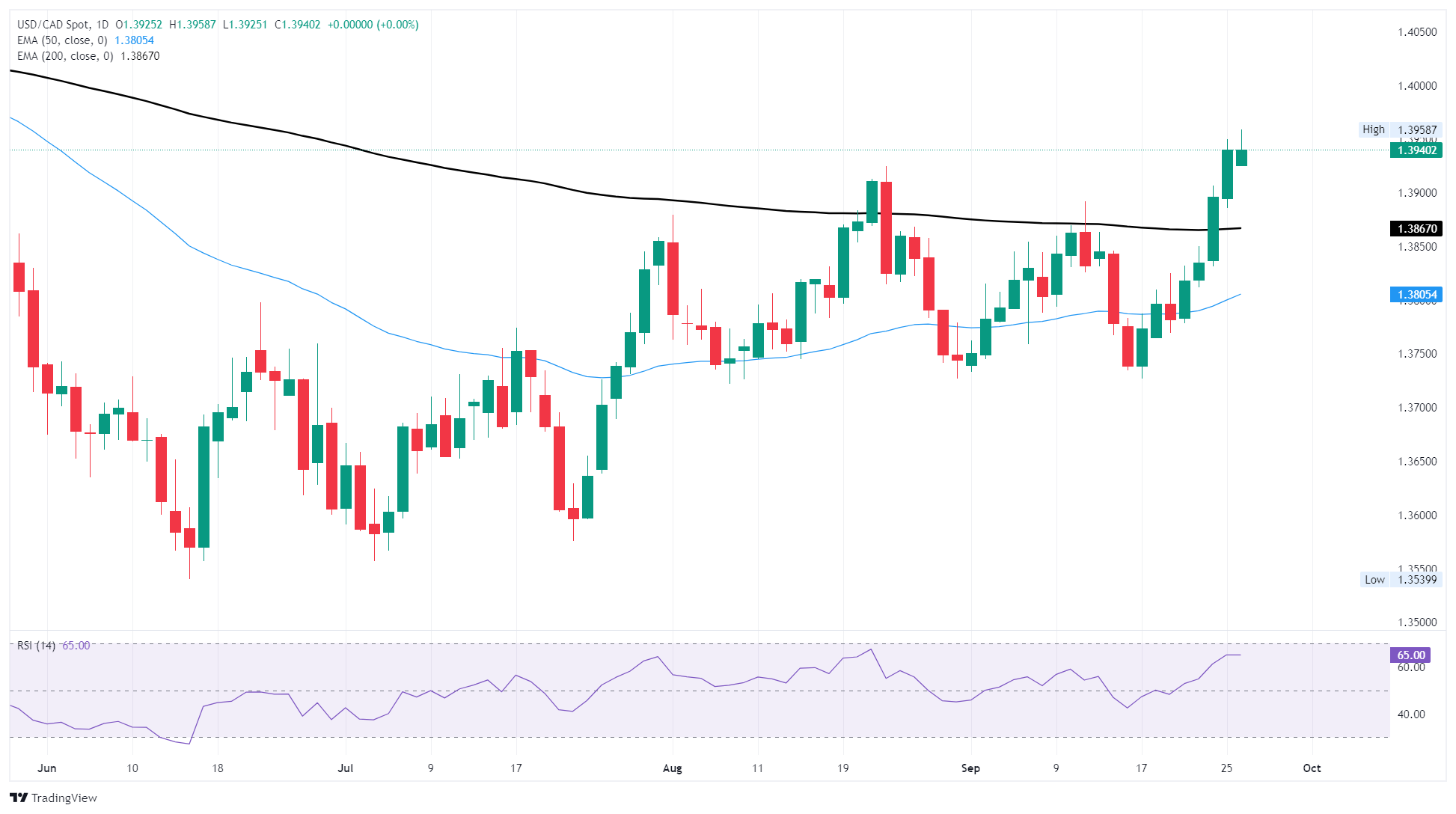Canadian Dollar slows losses, but weakness continues
- The Canadian Dollar clamped down on bearish momentum on Friday.
- Despite cooling downside momentum, the Loonie still tapped 18-week lows against the US Dollar.
- The Canadian Dollar is now on the weak side of key moving averages against the Greenback.
The Canadian Dollar (CAD) slowed its pace of losses against the US Dollar (USD) on Friday, but still remains firmly on the low side, testing 18-week intraday lows before battling back against the tide of Greenback pressure to cap off a week of sustained losses.
Canadian Gross Domestic Product (GDP) growth rebounded in July, helping to provide some thin support for the Loonie on Friday, but market flows remain largely unchanged in the near-term. US Dollar weakness returned to markets after US Personal Consumption Expenditure Price Index (PCE) inflation came in around where markets expected it to, keeping broad-market sentiment focused on high odds of a follow-up Federal Reserve (Fed) interest rate cut in October. Despite a general weakening in Greenback flows, the Canadian Dollar is struggling to find its footing.
Daily digest market movers: Canadian Dollar pumps the brakes to limited success
- The Canadian Dollar is roughly flat against the US Dollar on Friday after briefly testing fresh 18-week lows.
- Canadian GDP growth accelerated to 0.2% MoM in July, flouting market forecasts for a 0.1% uptick from the previous month’s 0.2% contraction.
- US PCE inflation printed roughly in-line with expectations, but is still riding well north of the Fed’s 2% annual target.
- Despite stubborn inflation, market expectations for a second straight rate cut from the Fed in October remain pinned to the ceiling, with rate markets pricing in nearly 90% odds a follow-up 25 bps rate trim on October 25.
- Next week will be another US-heavy economic data docket as another Nonfarm Payrolls (NFP) jobs data dump looms ahead next Friday.
Canadian Dollar price forecast
USD/CAD has been grinding higher since mid-September, with a sharp acceleration over the past few sessions. The decisive breakout above both the 50-day and 200-day EMAs signals a shift in momentum toward the bulls. Importantly, the break above the 200-day EMA has been sustained with follow-through buying, suggesting market participants are willing to chase strength rather than fade it.
On the upside, the pair is now probing the 1.3950 zone, a level that has acted as a near-term cap in recent months. A clean daily close above here would open the door toward 1.4000 psychological resistance and potentially extend toward 1.4100 if momentum persists. On the downside, support is building at the former resistance area around 1.3880, which coincides with the 200-day EMA. As long as that zone holds, the broader bias tilts bullish.
USD/CAD daily chart

Canadian Dollar FAQs
The key factors driving the Canadian Dollar (CAD) are the level of interest rates set by the Bank of Canada (BoC), the price of Oil, Canada’s largest export, the health of its economy, inflation and the Trade Balance, which is the difference between the value of Canada’s exports versus its imports. Other factors include market sentiment – whether investors are taking on more risky assets (risk-on) or seeking safe-havens (risk-off) – with risk-on being CAD-positive. As its largest trading partner, the health of the US economy is also a key factor influencing the Canadian Dollar.
The Bank of Canada (BoC) has a significant influence on the Canadian Dollar by setting the level of interest rates that banks can lend to one another. This influences the level of interest rates for everyone. The main goal of the BoC is to maintain inflation at 1-3% by adjusting interest rates up or down. Relatively higher interest rates tend to be positive for the CAD. The Bank of Canada can also use quantitative easing and tightening to influence credit conditions, with the former CAD-negative and the latter CAD-positive.
The price of Oil is a key factor impacting the value of the Canadian Dollar. Petroleum is Canada’s biggest export, so Oil price tends to have an immediate impact on the CAD value. Generally, if Oil price rises CAD also goes up, as aggregate demand for the currency increases. The opposite is the case if the price of Oil falls. Higher Oil prices also tend to result in a greater likelihood of a positive Trade Balance, which is also supportive of the CAD.
While inflation had always traditionally been thought of as a negative factor for a currency since it lowers the value of money, the opposite has actually been the case in modern times with the relaxation of cross-border capital controls. Higher inflation tends to lead central banks to put up interest rates which attracts more capital inflows from global investors seeking a lucrative place to keep their money. This increases demand for the local currency, which in Canada’s case is the Canadian Dollar.
Macroeconomic data releases gauge the health of the economy and can have an impact on the Canadian Dollar. Indicators such as GDP, Manufacturing and Services PMIs, employment, and consumer sentiment surveys can all influence the direction of the CAD. A strong economy is good for the Canadian Dollar. Not only does it attract more foreign investment but it may encourage the Bank of Canada to put up interest rates, leading to a stronger currency. If economic data is weak, however, the CAD is likely to fall.

